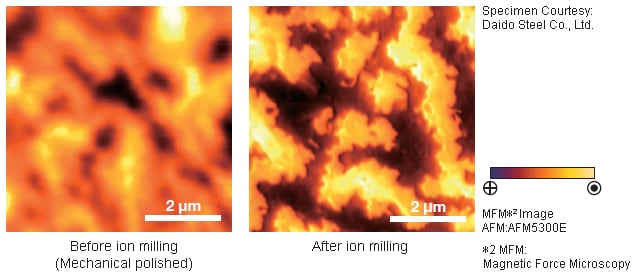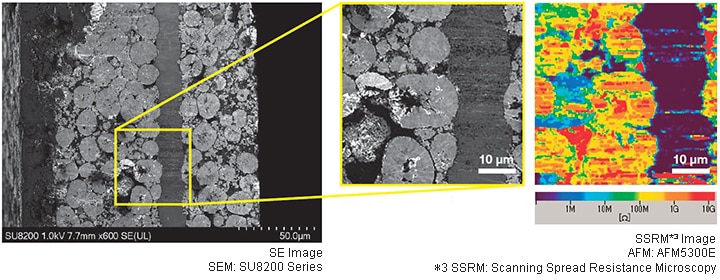Ion Milling System IM4000Plus
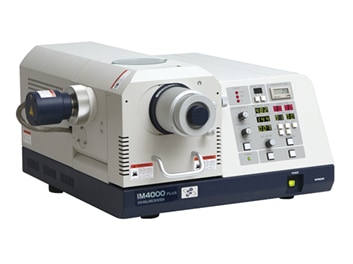
The IM4000Plus Ion Milling System utilizes a broad, low-energy Ar+ ion beam milling method to produce wider, undistorted cross-section milling or flat milling, without applying mechanical stress to the sample.
Overview
The Hitachi IM4000Plus Ar ion milling system provides two milling configurations in a single instrument.
Previously two separate systems were needed to perform both cross section cutting (E-3500) and wide-area sample surface fine polishing (IM3000), but with Hitachi's IM4000Plus, both applications can be run within the same machine.
Furthermore, with an increase in the maximum milling rate to 500 μm/h for Si, the new Ar ion gun design of the IM4000Plus enables a reduction of cross section processing times by as much as 66% compared to the previous IM4000.
In addition, the entire sample stage of the IM4000Plus can be removed for convenience when setting specimen and fine positioning a cross section cutting edge using an external high-resolution optical microscope.
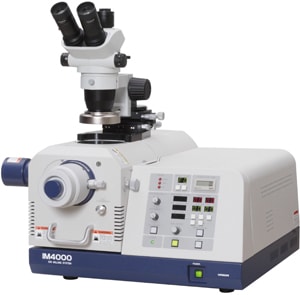
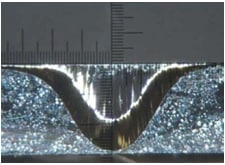
Cross Section Milling
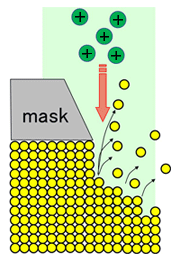
Conventional mechanical polishing or cutting techniques on soft, composite materials apply significant lateral sheer forces to the sample and often result in cross-section surface artifacts such as scratches, smearing, wash-out of softer materials, delamination and other damage.
In contrast, ion beam sputtering is a stress-free physical process whereby atoms are ejected from a target material due to bombardment of the target by energized particles.
Mirror-surface quality cross sections are created by forming an ion beam resistant mask on a sample surface in such way that one half of the vertically incident ion beam is blocked by the mask. The other half of the ion beam gradually removes the sample material protruding from the mask, and as a result, a straight cross sectional plain is formed below the edge of the protective mask.
The range of materials and samples that can be subjected to ion cross section milling is not limited to hard matter. In fact, high-quality sectioning can be achieved with the IM4000Plus even with "soft" samples such as paper, polymers, and powders.
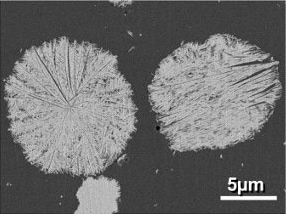
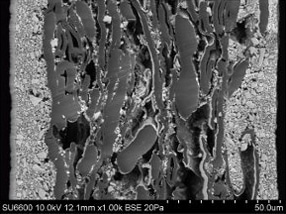
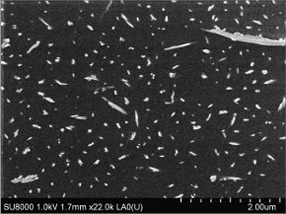
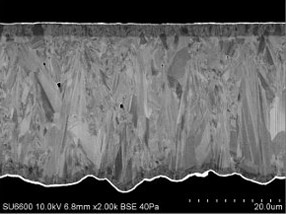
Flat Surface Milling
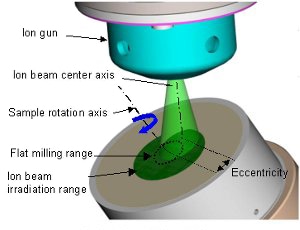
The wide, polished areas can be achieved as the sample rotation (or swing) center axis is shifted from the ion beam center, thereby compensating the intensity distribution of the ion beam profile.
A variable beam incidence angle (freely selectable from vertical to glancing incidence) allows both a perfect smoothing - for example in preparation for EBSD analysis - or a selective enhancement of specimen surface features (relief milling) for optimized SEM observation.
A high-resolution optical microscope is optionally available with the IM4000Plus to enable live observation of the cross section cutting area through a window in the processing chamber. This supports the user in various tasks such as deciding the end point of sample milling when dealing with unknown materials.
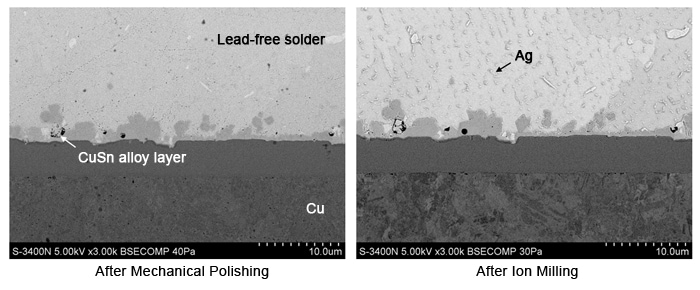
Features
The IM4000Plus Series Ion-Milling Systems are the second-generation of IM4000 series hybrid instruments that support Cross-Section Milling and Flatmilling®. A wide variety of system configurations are available: Standard, Cooling, Air Protection, and Cooling & Air Protection.

- Faster milling with improved ion optics (> 500 μm/h at 6 kV)
- Intermittent milling process for heat dissipation when handling thermally sensitive materials
- Improved cryo operation with precise temperature control (cooling model)
- Higher precision of mask position alignment for site specific cross-section milling
Cooling Unit
Cooling Unit
The cryogenic versions of the and IM4000Plus provide active cooling of the cross section milling stage during sample processing. A liquid nitrogen dewar is connected to the cross section stage to effectively remove ion beam milling induced heat from the shielding mask and sample.
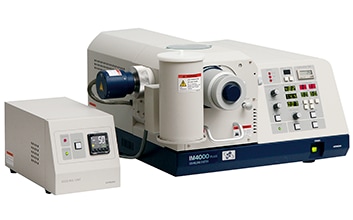
The Cryo Temperature Controller (CTC) allows the user to set a desired cooling temperature during the milling process. This is achieved by placing a heater and temperature sensor directly at the cross section shielding mask so that any desired process temperature can be accurately maintained.
At the end of the milling process, the cooled specimen stage is gently warmed up to room temperature in order to avoid ice formation or water condensation on the sample surface.
Sample cooling can support damage-free cross section milling of highly temperature sensitive specimen such as polymers or soft metals. However, even with active cooling applied, it is important to choose proper processing parameters, especially for samples with low thermal conductivity, because the heat generated at the direct impact point of the ion beam must first be effectively conducted to the cooled parts embedded in the specimen. The IM4000Plus with CTC provides high ion beam currents even at lower "gentle" accelerating voltages, and is therefore optimally suited for this type of work.
- Passive heat sink option
For occasional temperature-sensitive applications, an optionally available pre-cooled heat sink block can be easily attached to the cross section milling stage of the standard IM4000Plus unit. By pre-chilling this cooling block in a freezer prior to starting milling, samples can be effectively cooled during the typical short processing times in IM4000Plus.
Options
Air Protection Holder Unit
Advanced materials - especially those related to Lithium battery research - require strict protection from the atmosphere during transfer from cross sectional preparation to analysis through SEM.
IM4000Plus air protect is a retrofittable solution for IM4000Plus instruments that allows samples prepared and encapsulated under protective atmospheric conditions to be loaded in a glove box and then into the IM4000Plus and to be exported under vacuum conditions after cross section milling.
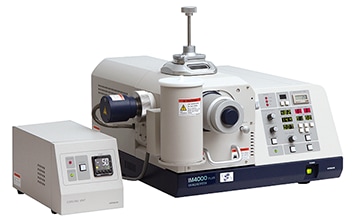
A manipulator mechanism attached to the viewing window on top of the specimen chamber allows sealed sample capsules to be opened after IM4000Plus evacuation, and to be re-encapsulated prior to chamber venting.
Standard capsules can be directly transferred into the air protect specimen exchange chambers, which are optionally available for all Hitachi FE-SEM Original encapsulation of samples to be ion milled is supported by a fully mechanical fit type holder-and-shielding mask mechanism, which eliminates the fine mechanical setting and adjustment tasks that are usually hard to accomplish wearing thick rubber gloves inside a glove box.
The application picture below shows the importance of such air protected sample preparation work. In this example, a negative electrode of a Li ion battery is first observed under air protected transfer to the SEM, and then observed a second time after 10 minutes of exposure to the room atmosphere.
Specimen : Negative electrode of lithium-ion battery
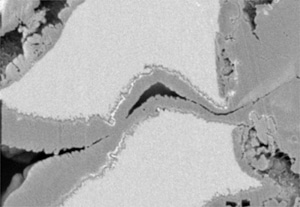
under strict air protection

exposure between ion beam milling and
SEM observation
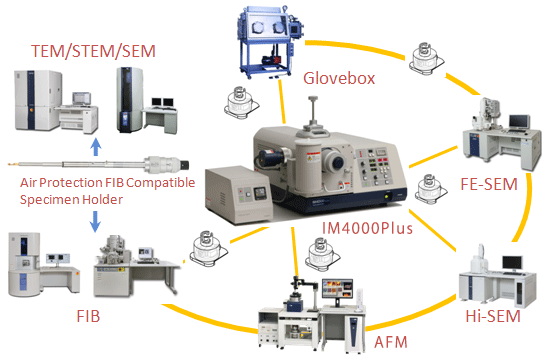
Applications Data
Cross section milling
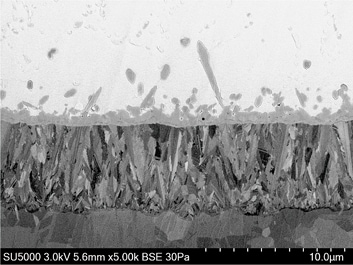
BSE Image
SEM: SU5000
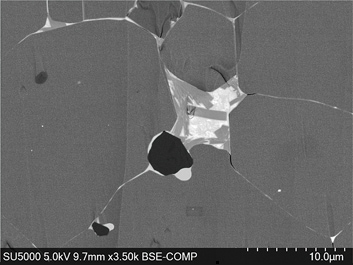
BSE Image
SEM: SU5000
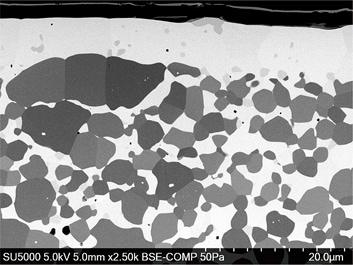
BSE Image
SEM: SU5000
Specimen Courtesy : Prof. Katsunori Hanamura, Tokyo Institute of Technology
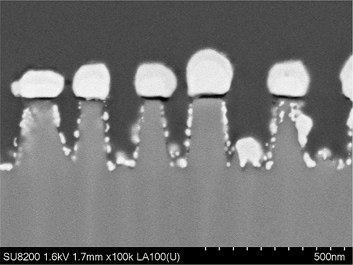
BSE Image
SEM: SU8200 Series
Specimen Courtesy : Prof. Masahiko Yoshino, Tokyo Institute of Technology
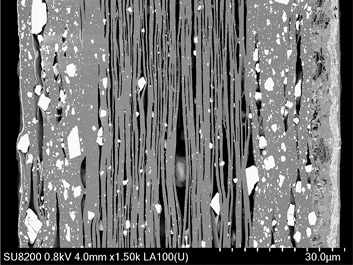
BSE Image
SEM: SU8200 Series
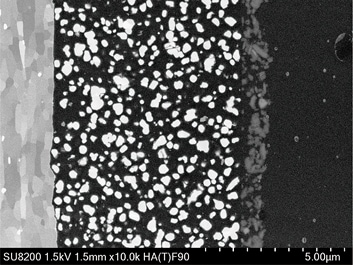
BSE Image
SEM: SU8200 Series
Flat milling
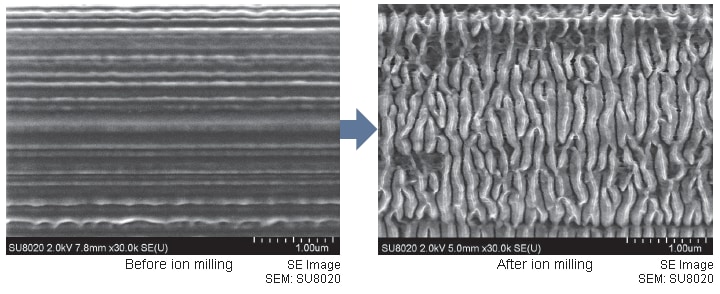
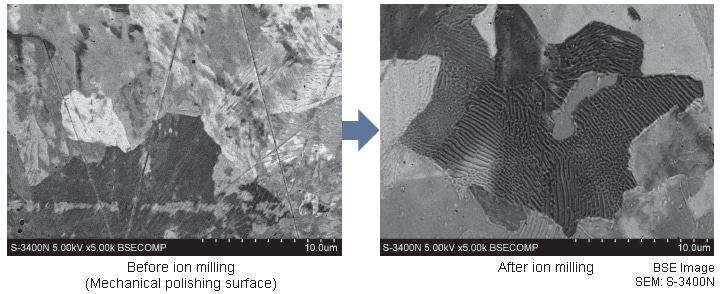
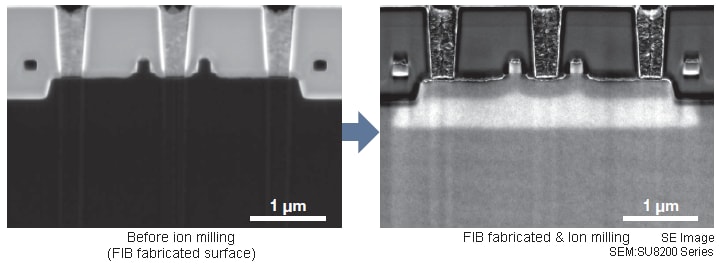
EBSD
Cross section milling
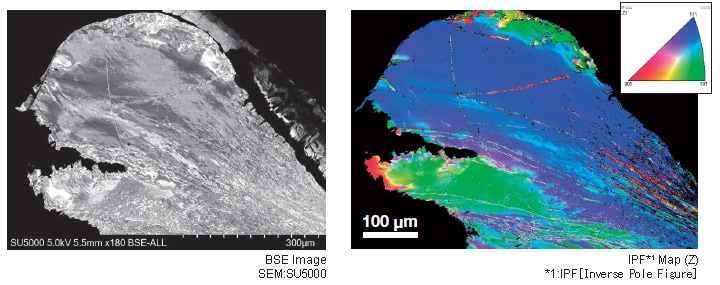
Flat milling
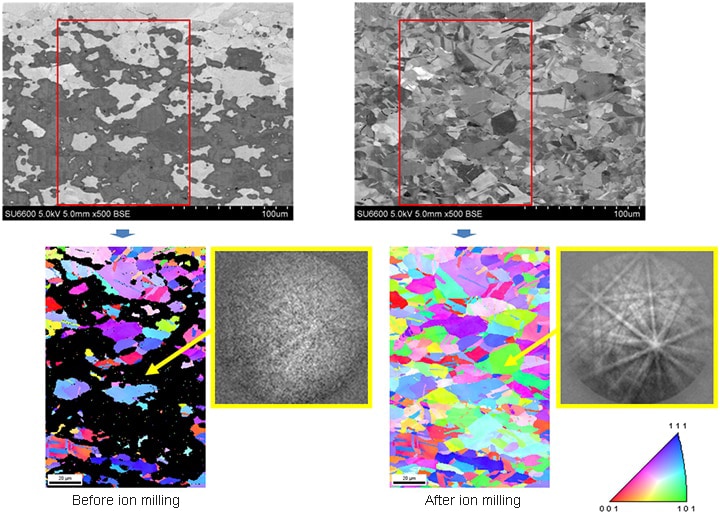
Atomic Force Microscopy(AFM)
